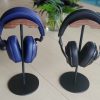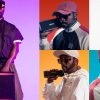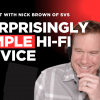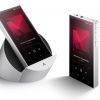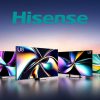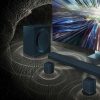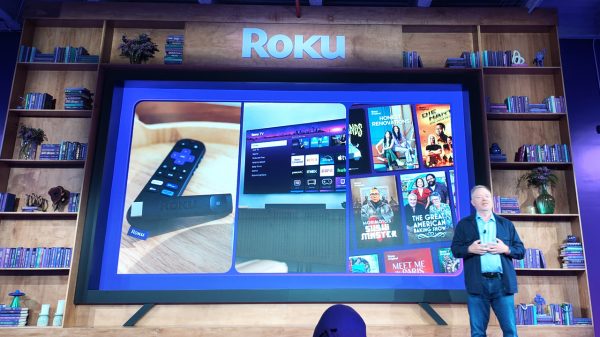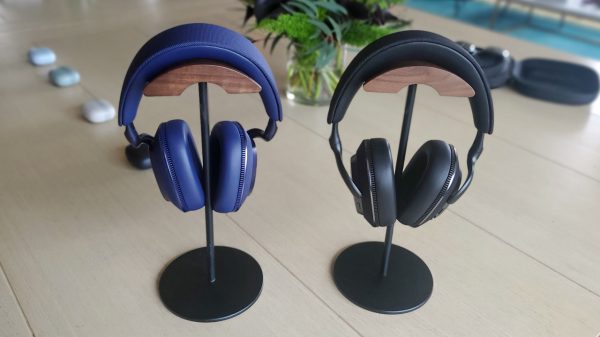The Head-Fi revolution is well into its second decade and over that rather busy period, we have seen a number of rather innovative companies deliver some unique solutions that have changed the way consumers experience music on the go and whilst working at home and in the office. The traditional high-end audio manufacturers have been left in the dust by these upstarts; and we are rather fortunate that it occurred. We have covered iFi Audio with some intense interest over the past 40 months and whilst not every new release has been a hit — they seem to hit the target more frequently than most.
They started in 2012 as an offshoot of Abbingdon Music Research, one of the UK’s largest manufacturers of high-end audio components. The goal was to bring the same quality and innovation to the portable space — at prices that most consumers could afford.
That ethos has been blurred somewhat as iFi has certainly branched out with a number of components and accessories for the consumer and pro audio market that come with rather expensive price tags. The COVID pandemic also took a toll on the company as a number engineering team members departed.
Marketing Mistake?
There has been a lot of buzz within the headphone enthusiast community in regard to how the iFi iDSD Diablo 2 was initially marketed; the original ad-copy listed peak power at 5 watts with no mention of RMS power or testing methodology.
This was immediately called out by GoldenSound and others who remembered the original Diablo also listed peak numbers that were well above what everyday users were likely to ever see.
The noise reached a fever pitch when some former employees contributed to the discussion. iFi has since posted RMS numbers, but it certainly raised a few eyebrows.
Some speculated that the marketing team unknowingly shortened specifications, while others claim it was intentional. I bring this up solely because if I didn’t someone would bring it up in the comments and accuse us of trying to hide it.
I am not going to speculate on motivation, nor am I going to waste any more press on what I consider a dead issue. We now know the realistic numbers and my intention from this point forward is to review the actual device on its merits and weaknesses.

Overview
The iDSD Diablo 2 is iFi’s flagship portable DAC/AMP and the latest in a line of DAC/amps that started with the original iDSD. I still have one somewhere. Its size has changed little between the original and the latest iteration, but features have varied along the way.
Each successive generation has either added features, increased power, shrunk the case, or some combination of all of those things but the basic elements have remained the same.
The iFi models have used Burr Brown DACs and amplifiers capable of powering headphones that are typically thought of as requiring desktop amplifiers. My favorite unit so far was the iFi iDSD Signature Finale that brought together pretty much all their technological advances to that point.
It offered 2 watts of output power, PCM support to 32-bit/768kHz, DSD512, (MQA for those who cared), xBass, 3D+, ie-match, and enough input options to cover about any realistic possibility.
Outputs were simple with a single .25-inch inch single ended output and a 4.4mm S-balanced output.
They even finally ditched the USB Type-A charging port that defined the first couple generations in favor of a USB Type-C port; not only was the implementation less than ideal, but it was not forward thinking in regard to how many smartphones and tablets would likely offer USB Type-C connectivity across the globe.

Diablo (original)
The iFi iDSD Diablo was the first product in a new line of products that would replace the iDSD series and it was a step forward in some respects and a step backward in others. Gone were the Xbass and 3D+ tuning options, the exposed filters, and ie-match.
Power remained roughly unchanged with roughly 1.6 watts RMS, three gain modes, and inputs remained the same.
Outputs changed from .25-inch single ended and 4.4mm S-balanced on the iDSD to .25-inch S-balanced port and a 4.4mm balanced output.
The strangest part of the change was that the .25-inch output was more potent sounding, and the volume control reverted from the improved version in the Finale back to a more pedestrian component which reintroduced some issues with channel imbalances at low listening volumes.
With that and without ie-match, the Diablo was best reserved for headphones that required significant output power so as to avoid the imbalance when using sensitive IEMs or headphones.
The Diablo simplified the equation for some, but was also less versatile than some of its predecessors.
To me, the Diablo was more of a lateral move than an upgrade from either the iDSD Black Label or the Finale as it didn’t break new ground in any meaningful way and it cost more than the previous version as well.

Diablo 2
The release of the Diablo 2 with a number of new features along with the reinstatement of others felt like a genuine step forward on paper.
It was rather obvious from the first series of press release images, that the industrial design has changed rather significantly; and it was certainly necessary for iFi to take that step in a rather crowded segment with excellent options available from Schiit Audio, FiiO, Questyle, and Topping.
The iDSD line has always featured a fairly nondescript box shape and the original Diablo was instead a cylinder with flattened faces; again lacking any real design aesthetic.
The Diablo 2’s aluminum shell is a hexagonal shape with rounded edges and grooves adding better heat dissipation in addition to a sharper look. The anodizing is a bit less fire engine and a bit more ruby red compared to the first generation, which gives Diablo 2 a more refined and polished look.

Features
The controls are found one the nose, tail, and underside of the unit with the nose housing the volume control, power, gain, and xMEMS mode switch.
The tail houses the Bluetooth pairing button, and the bottom surface houses the ie-match switch.
Inputs are all on the rear of the unit with a 4.4mm jack, an S/PDIF port supporting both coaxial and optical connections, and a USB Type-C port for data.
A second USB Type-C port for charging can also be found between the coaxial and USB Inputs which seems a bit odd as that means power and inputs are co-mingled to some degree on the board behind the ports as well.
The outputs are all on the front panel with the option of 4.4mm balanced or .25-inch single ended. Bluetooth is only available as a source on the Diablo 2 so there is no wireless option for connection to headphones.
One other feature worth noting is the volume lock on the nose that physically locks the wheel in place to keep an unintended bump from blasting the listener. It is a welcome feature that more manufacturers should include; especially with amplifiers that can deliver as much power as the Diablo 2.
Internally, the Diablo 2 sports a 16-core XMOS chip that handles the digital input duties for the USB input and offers MQA support for those using it. This does limit MQA to only the USB input since the Optical and Coaxial inputs bypass the XMOS chip.
The Diablo 2 also supports Bluetooth 5.4 with aptX Lossless, as well as aptX HD and Adaptive, LDAC, LHDC/HWA, AAC and SBC. There are very few phones and sources with aptX Lossless support presently, so consider that protocol support as potential future proofing and LDAC, aptX Adaptive, and LHDC as your best options for today.


The digital inputs all feed a pair of Burr Brown Multi-bit DACs (as used in nearly all iFi products). The result is support for PCM up to 32-bit/768kHz, DSD512, 2xDXD, and MQA (depending on input method).
The amplifier circuit appears to have changed little from the previous generation with roughly 1.6 watts of available output power but the gain markings have changed which will confuse some.
Previous versions had Eco, Normal, and Turbo while the Diablo2 has the same gain levels but marked Normal, Turbo, and Nitro. Marketing speak aside, the three gain levels and ample power give the Diablo 2 the ability to drive some pretty demanding headphones like the AKG K1000 and Beyerdynamic DT880 (600 ohms).
It is also quite capable of driving most of the big planars quite well, but does begin to tail off as impedances drop and sensitivities increase. This should be where ie-match comes in and helps attenuate the signal when using IEMs or extremely sensitive headphones and indeed it helps some but even that has its limits.
I found it worked well with the FiiO FT5 headphones with their low impedance (36 ohms) and high sensitivity (110dB/1Vrms@1kHz) but once I moved to the Campfire Andromeda, I discovered where things become somewhat wonky with the Diablo 2.
Using ie-match on its highest setting creates an output impedance of over 3 ohms which is enough to cause some audible changes in hyper-sensitive IEMs like the Andromeda.
So even though ie-match does allow the Diablo 2 to pair with more diverse selection of headphones than its predecessor, it is not a bottomless pit of headphones and IEMs that it can drive without some issues.
xMEMS have generated a lot of buzz and products containing xMEMS have started to arrive with models like the Noble XM1 and Creative Aurvana ACE incorporating them. That said, both of those models have built-in amplification to handle the high voltage demands of the new driver type.
The Diablo 2 has xMEMS support built-in, which makes it easier for manufacturers to avoid having to include high-bias amplifiers in their earphones. Much like aptX Lossless, this feature will become more revenant in the future when it applies to more products.

Sound Notes
I was impressed with the Diablo 2 paired with my Sennheiser HD800s and also with the HiFiMAN HE560s (45 ohms/90dB Sensitivity) as these two represent both of the most common use cases for the Diablo 2 and cover both high impedance dynamic and big planar magnetic headphones.
On the low end, the Diablo 2 was able to provide plenty of power for repeated big hits that sometimes weaken on lesser devices. Tracks like “Sprach Zarathustra” allow one to judge this, as the timpani drum-roll in the opening moments can trail off if an amplifier sags.
Detail retrieval was quite good and textures were what I have come to expect from the two headphones; the Diablo 2 did its job of adding gain and control without coloration in the bass range.
That changes a bit in the upper midrange and lower treble. The Diablo 2 is slightly brighter than neutral which was particularly evident on the HE560 which already leans a little to the brighter side of things. The Diablo 2 added too much top end energy with these headphones, which some might find somewhat strident.
The HD800 is a bit warmer to begin with and brightness push is both less noticeable and at times an improvement over the default tuning. So its boost is a bit of a mixed blessing depending on what the Diablo 2 is paired with.
The darker the headphone, the less likely you are to notice that extra degree of emphasis; products like the Beyerdynamic DT880s benefitted from the tonal balance and presentation and it is a combination that we can certainly recommend.

Conclusions
Is the iFi Diablo 2 a significant upgrade over its predecessor and worth the money?
I came away impressed with the addition of Bluetooth and aptX Lossless. Wireless connectivity is a big plus when talking about an amplifier this size that you can take with you.
While aptX Lossless is not readily available yet on source devices, I was able to test it using a Nubia RedMagic phone that is one of the few currently available devices supporting Bluetooth 5.4 and aptX Lossless.
I like the redesign of the case as I think it looks more fitting of a device at the $1299 asking price, but that brings up a sticking point for me. The original Diablo was $899 (now $999) and has roughly the same core functionality. If you have an original Diablo, I’m not sure the Diablo 2 does enough to merit an upgrade.
For those who don’t have a Diablo or iDSD Black Label, the Diablo 2 is a potent DAC/Amp with good sound, good battery life, and a hedge against obsolescence.
The marketing specifications don’t feel entirely accurate, but there is no question that this amplifier/DAC can compete with some of the best products out there.
Where to buy: $1,299 at Amazon | Audio46 (save 5% with coupon code: ecoustics)
Related Reading


